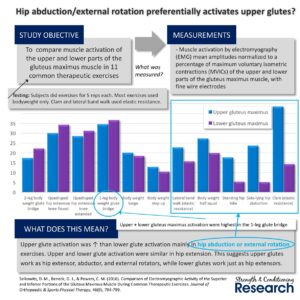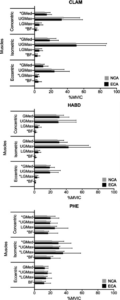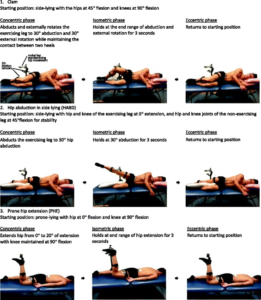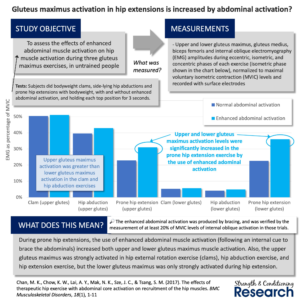HIP EXTERNAL ROTATION – MULTIPLE EXERCISES – RESEARCH
Click on Image to Enlarge
EMG STUDIES
UPPER GLUTEUS MAXIMUS, GLUTEUS MEDIUS, TFL
– Clam Shells Hips Flexed @45º and Knee Flexed @90º
 Which Exercises Target the Gluteal Muscles While Minimizing Activation of the Tensor Fascia Lata? – 2013
Which Exercises Target the Gluteal Muscles While Minimizing Activation of the Tensor Fascia Lata? – 2013
– Selkowitz et al
– To compare hip abductor muscle activity and to determine which exercises are best for activating the gluteus medius and the superior portion of the gluteus maximus, while minimizing activity of the tensor fascia lata (TFL).
– 20 healthy persons participated. Electromyographic signals were obtained from the gluteus medius, superior gluteus maximus, and TFL muscles using fine-wire electrodes as subjects performed 11 different exercises


